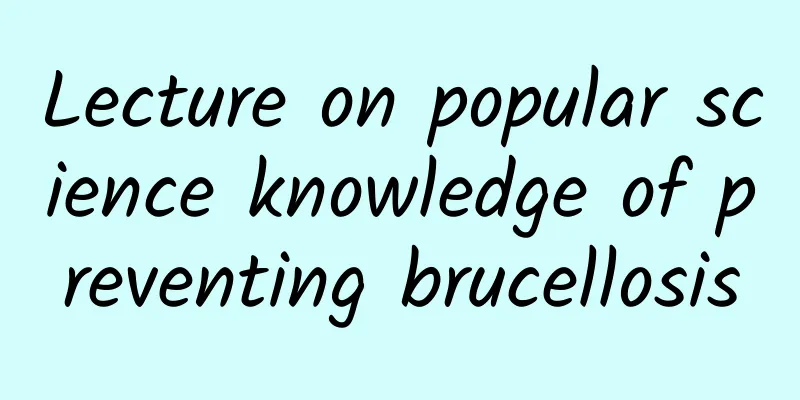"The tip of the tongue tastes sweet, the back of the tongue tastes bitter"? What you think is the tongue's "taste map" is actually fake

|
"The tip of the tongue tastes sweet, the back of the tongue tastes bitter, and the sides of the tongue feel sour and salty." Someone has drawn a "taste" map, saying that the tip of the tongue is most sensitive to sweetness, the root of the tongue is more sensitive to bitterness, and the sides of the tongue are responsible for tasting sour and salty... Rumor Analysis That is not the case. This misreading was originally caused by an incorrect translation of a paper. In fact, scientists have discovered that taste is actually perceived through taste receptor cells distributed on taste buds. In the taste buds on the tongue, the distribution of these taste receptor cells does not have significant regional differences, and each location can perceive a variety of tastes. As the pioneer in enjoying delicious food, the tongue is actually a form of muscle in our body, but because it is covered with many taste buds, it becomes the most special one. Each person's taste buds usually contain about 100 closely packed taste receptor cells that can sense sweet, sour, bitter, salty and umami. There is a long-standing saying that "the tip of the tongue senses sweet, the root of the tongue senses bitter, and the sides of the tongue sense sour and salty" (as shown below), but did you know that this knowledge point is actually a complete misunderstanding? In the human taste system, there is no such map . In fact, the method of testing is also very simple. You can use the tip of your tongue to taste sour, sweet, salty and bitter soups, and then you will find that there is not much difference in their perception. So, how did this misunderstanding come about? The misconception that "the tip of the tongue tastes sweet, the back of the tongue tastes bitter" How did it appear? This misconception actually originated from an article published in 1901[1]. Scientist DP Hanig dripped juice of different flavors on different parts of the tongue and tested the perception threshold of each position for different flavors. Then he did get certain conclusions, namely the taste map shown above. But his original intention was just to show that these positions are more sensitive to a certain taste, not that only this position can perceive this taste. And because of the limitations of the experimental conditions at the time, the conclusions drawn were not particularly rigorous, and the article was not widely discussed at the time. Then, the story takes a turn. In 1942, Edwin Garrigues Boring of Harvard University translated the original German article into English, but he mistakenly wrote absolute sensitivity instead of relative sensitivity, which completely distorted the meaning of the original article and turned it into another story. The so-called taste map became complete from that moment on and was even written into his book, making it widely known. In subsequent studies, some people began to repeat DP Hanig's experiment, but the results were different. In 1974, Virginia Collings published an article showing that the threshold for taste perception at different locations is indeed different. The tip of the tongue is most sensitive to saltiness, while the soft palate is more sensitive to bitterness, but the difference is not very large . [3] At the same time, another scientist, Sato Kaoru, conducted an experiment showing that there is actually no difference in the perception of different tastes in each area of the tongue . [4] Of course, these are the simplest tests of the phenomenon. How do we taste, anyway? From the perspective of mechanism Is it possible to have a "taste map"? In later studies, scientists discovered that taste is actually perceived through taste receptor cells distributed on taste buds . Among them, saltiness and sourness are perceived through ion channel receptors [5-6], while bitterness, sweetness and umami are perceived through G protein-coupled receptors [7-9]. In the taste buds on the tongue, the distribution of these taste receptor cells does not have significant regional differences , so the "taste map" may put an end to the debate. In fact, it is not that complicated. Various tastes can be perceived at each location. Copyright image, no permission to reprint So, how do taste signals turn into our real feelings? Scientists have already developed a relatively complete brain neural circuit. After the receptor cells on the taste buds on the tongue perceive these flavors, they are transmitted to the epiglottic branch of the vagus nerve through the tympanic nerve branch of the facial nerve and the glossopharyngeal nerve, and then to the solitary nucleus of the brainstem, then to the ventroposterior medial nucleus of the thalamus, and finally to the anterior insula and frontal operculum of the cerebral cortex. After these higher-level centers for processing taste information have finished processing, you may sigh: "Ah, so salty/sweet/bitter/fresh/sour!" [10] In animal experiments, scientists have even identified neurons that respond differently to bitterness and sweetness . They found that when bitter signals reach the center for taste information processing, they produce negative feedback inhibition on sweet neurons and activate bitter neurons, amplifying the bitter response[10]. So maybe the tongue really doesn’t have a “taste map”, but the neurons in the brain do. Don’t get it wrong now. Looking in the mirror of rumors Many rumors come from the misinterpretation of scientific research papers or the results of a certain research at a certain stage, but then there is new progress. When you see "such and such a study says...", you can be skeptical and try to search for related research first. Author: Ding Yu, PhD in Neurobiology, Zhejiang University Reviewer: Li Jingjing, Professor and Chief Physician, Department of Neurology, Beijing Tiantan Hospital |
<<: Let AI take a look at the X-rays taken in the hospital!
>>: "Foot crisis": joint sprains are no small matter, don't take sprained ankles lightly anymore
Recommend
Postpartum stretch marks
There are many things that women need to pay atte...
Changes in your sex life after having a baby
Giving birth to a child is a great act for a moth...
Can I have my wisdom teeth removed during pregnancy?
Growing wisdom teeth is particularly painful. The...
Why do I always feel sleepy during late pregnancy?
Pregnancy is a very long process. During this pro...
What are the symptoms of unclean abortion?
Abortion is seen as just a minor operation by mos...
What to do if your knee hurts after a cesarean section
Compared with natural birth, cesarean section is ...
Can I express milk during weaning?
As the baby continues to grow, weaning is somethi...
What are the causes of pain in the lower left abdomen of women?
Many women often experience abdominal pain. Some ...
When should twins start bed rest?
Pregnant mothers all know that when the baby deve...
Will women lose hair due to iron deficiency?
In life, everyone knows that iron is an essential...
Can I drink honeysuckle tea during menstruation?
The pharmacological value of honeysuckle to the h...
How should ectopic pregnancy without bleeding be treated?
Ectopic pregnancy is an increasingly common probl...
Common diseases of the female urethra
There are many common diseases among women. When ...
Sports enthusiasts should protect your Achilles tendon and prevent Achilles tendonitis!
Author: Wu Yong, Chief Physician of Beijing Jishu...
What should I do if I have sex after 10 days of having an IUD?
It is best not to have sex for ten days after hav...









